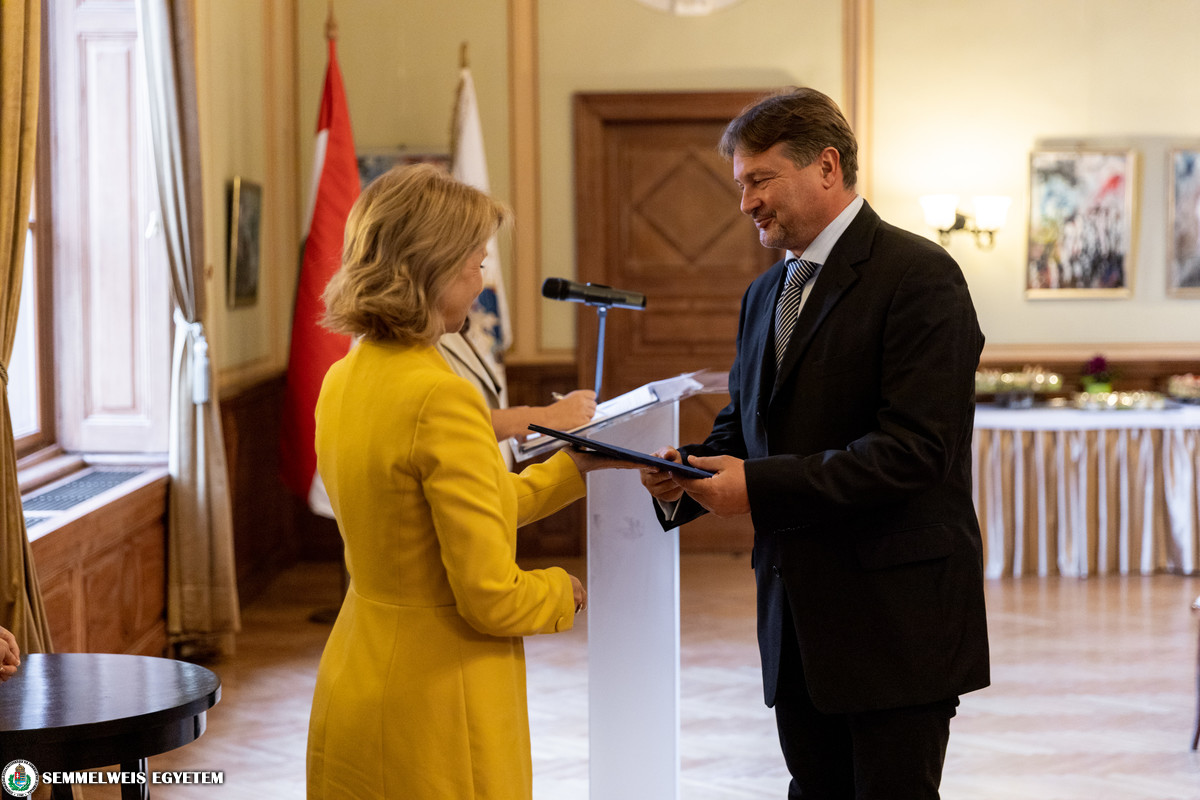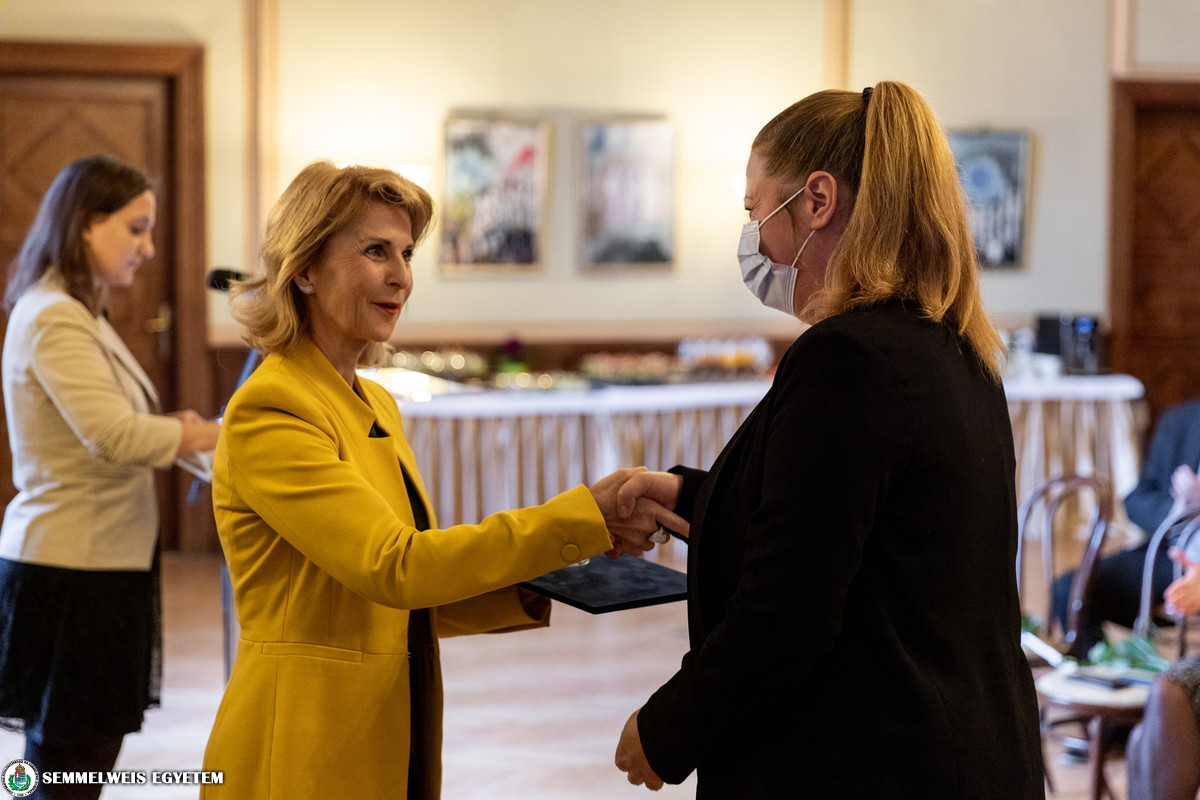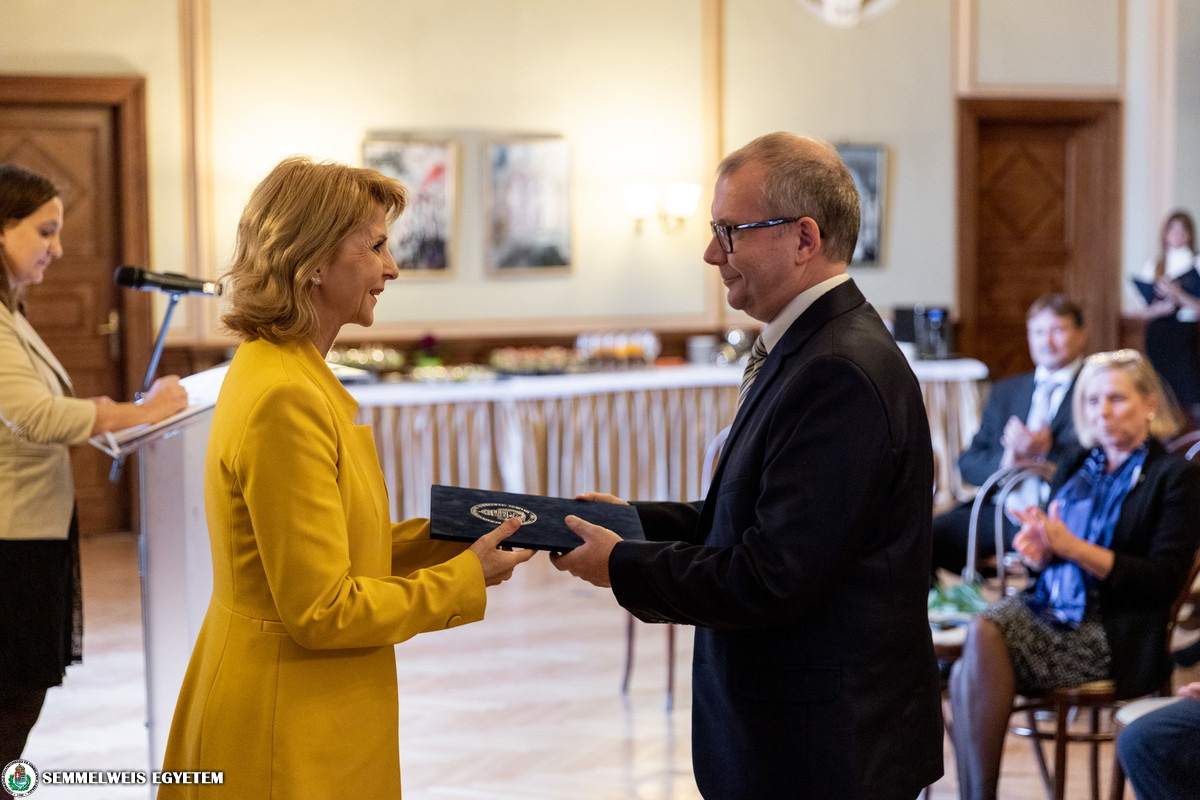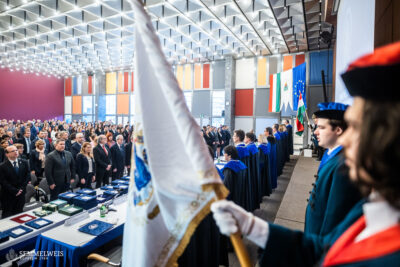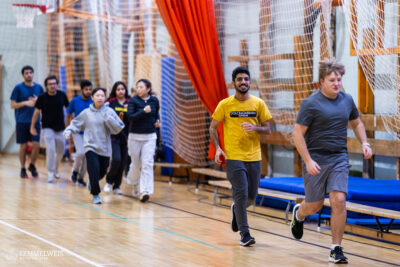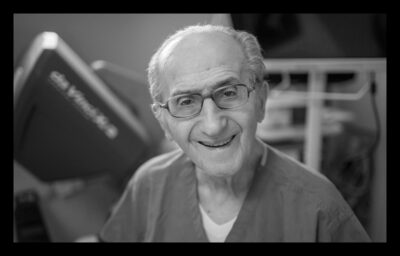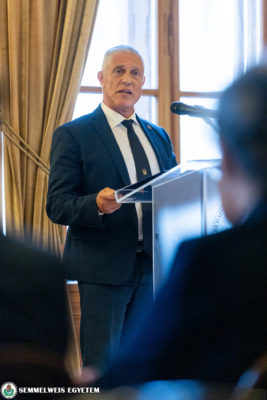 „65 years ago, as tensions had been simmering for some time, Hungary started a revolution on 23 October 1956, that sought political reform and independence from the Soviet Union.” – recalled dr. Ferenc Bánhidy (Vice-Rector for General Affairs) during the event remembering the Hungarian Revolution and Uprising in 1956. In his speech, dr. Bánhidy recalled on the historical events that led to the uprising and mentioned that participants and important figures of the revolution already knew that there was little if any chance of success, however this was the only way for Hungarians to revolt against the communist rule. Many people risked everything and sacrificed their lives for the enduring European spirit of freedom – added. The Budapest University of Medicine, the forerunner of Semmelweis University engaged actively in the events, the university staff and students were fighting to defend their liberty on the streets of Budapest and treated injured and wounded people behind the barricades.
„65 years ago, as tensions had been simmering for some time, Hungary started a revolution on 23 October 1956, that sought political reform and independence from the Soviet Union.” – recalled dr. Ferenc Bánhidy (Vice-Rector for General Affairs) during the event remembering the Hungarian Revolution and Uprising in 1956. In his speech, dr. Bánhidy recalled on the historical events that led to the uprising and mentioned that participants and important figures of the revolution already knew that there was little if any chance of success, however this was the only way for Hungarians to revolt against the communist rule. Many people risked everything and sacrificed their lives for the enduring European spirit of freedom – added. The Budapest University of Medicine, the forerunner of Semmelweis University engaged actively in the events, the university staff and students were fighting to defend their liberty on the streets of Budapest and treated injured and wounded people behind the barricades.
Vice-rector dr. Bánhidy emphasized that
Semmelweis University was always able to progress during important turning points in Hungarian history. The courage and bravery of our university’s heroes during the First and Second World War, the Spanish flu and the Revolution of 1956 will be remembered forever. Their selfless-service and self-sacrifice raised the profile, the reputation and the competitiveness of Semmelweis University.
In his speech, dr. Ferenc Bánhidy mentioned two names among the many anonymous heroes of the 1956 revolution events: his maternal uncle, György Vereckei, who was able to free the last Prince Primate of Hungary, József Mindszenty from prison. As the Hungarian State of Security wanted to arrest him, György had to flee to Austria and settled in Canada later. The vice-rector’s paternal uncle, dr. Attila Bánhidy was a student at the Faculty of Medicine in Pécs. Among with his university classmates he managed to bring fresh bread from the countryside to Budapest in a truck and distributed them on the streets of Budapest. He was expelled from the university, but the Budapest University of Medicine accepted him. He obtained his medical degree here later.
Studying history can help us to understand present-day issues and to create a better future – added dr. Bánhidy. He also added that currently the pandemic poses extraordinary challenges, however Semmelweis University proved its professional competency in overcoming the difficulties caused by the virus.
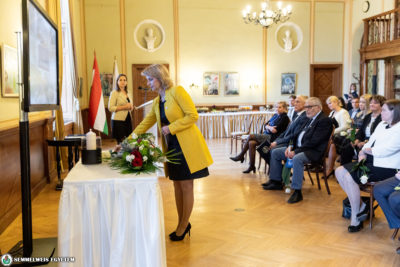 After his speech dr. Bánhidy, chancellor dr. Lívia Pavlik and all participants lit the candle and laid flowers in memory of the victims and heroes of the 1956 Revolution.
After his speech dr. Bánhidy, chancellor dr. Lívia Pavlik and all participants lit the candle and laid flowers in memory of the victims and heroes of the 1956 Revolution.
After the commemoration event chancellor dr. Lívia Pavlik presented four Pro Universitate Awards to Ágnes Kormos (Directorate of Nursing Leadership and Health Care Professionals’ Education), Péter Kovács (Városmajor Clinical Centre), Hajnalka Oberfrank (Directorate of Nursing Leadership and Health Care Professionals’ Education) and Zsolt Ürögi (Directorate of Services) in recognition of their efforts and hard work in the fight against the coronavirus.
Pálma Dobozi
Photo: Attila Kovács – Semmelweis University
Translation: Norbert Lukács
